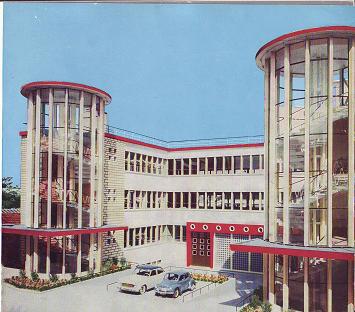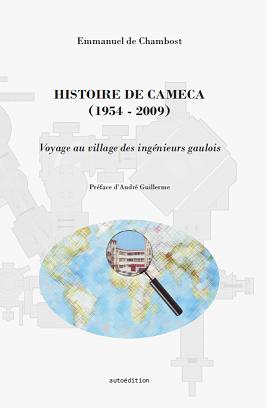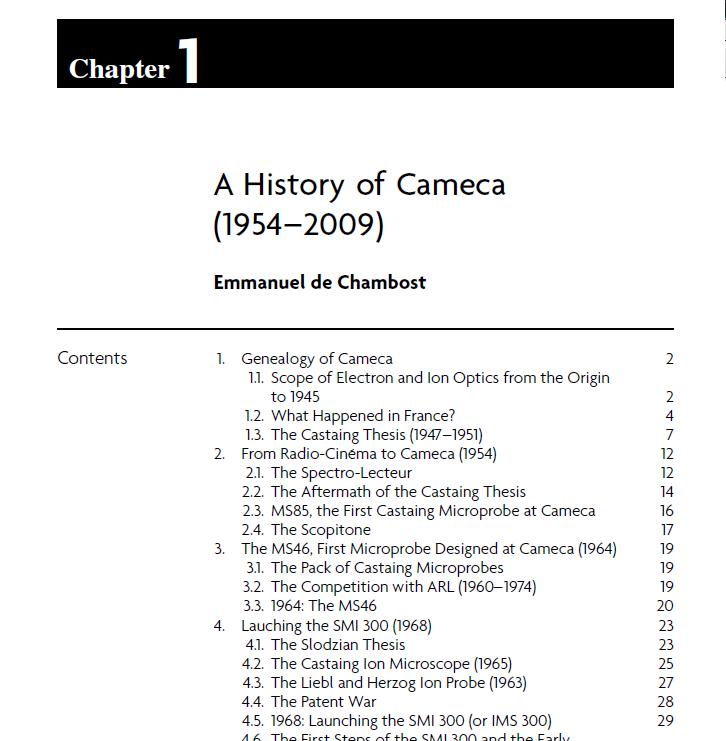Abstract
For more than 50 years, Cameca remained a
small company of approximately 200 employees involved in a small number of
scientific instruments dedicated to material analysis, implementing electron
beams and ion beams. The company was located in Courbevoie, in the Paris area.
The predecessor of Cameca, Radio-Cinéma, was created in
1929 within the French group CSF (Compagnie Générale de la Télégraphie Sans Fil)
just when the “talkies” were emerging. Maurice Ponte, chief of CSF, introduced
the scientific instrumentation in the early 1950s. At the same time that the
company withdrew from film activity in the late ’50s, it manufactured the
electron probe prototype developed by Castaing that became in a sustainable way
a major player in the electron probe microanalysis (EPMA) technique. From the
late 1960s, Cameca gradually gained ground as
the leader in magnetic secondary ion mass spectroscopy (SIMS) instruments that
it would develop in many different forms throughout the 1990s and 2000s. In
1987, Cameca left the Thomson-CSF group,
became independent, and was eventually acquired by the U.S. holding company,
Ametek. During the past decade, atomic probes became the third product line,
next to EPMA and SIMS instruments.



